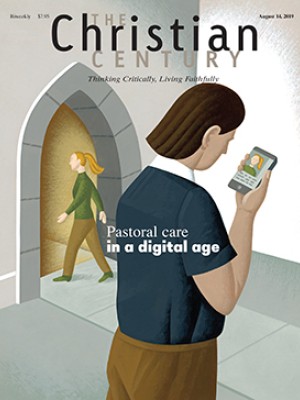Jains in America looking to pass on faith to next generation
At the 20th biennial JAINA Convention in California over the Independence Day weekend, nearly 3,500 Jains, followers of an ancient Indian sect, were treated to highly sought-after speakers such as Sadhguru Jaggi Vasudev, a yogi with 1.6 million followers on Instagram, and Gaur Gopal Das, a motivational speaker who has more than 2 million subscribers on YouTube.
But the real stars of the show, in a sense, were young Jains such as Pooja and Poonam Shah, 36 and 28 respectively.
The theme for the convention was “Jain Religion in the 21st Century,” and nearly everyone in attendance seemed to be aware that the next eight decades depend on handing the faith over to the millennial and Gen Z Jains.
In addition to breakout sessions geared specifically for their age group, the convention provided various ways for younger Jains to meet, including both Young Jains of America and Jain Connect, a new program to help young Jains “make new friends, new business connections or find a special someone.” An allied organization, Young Jain Professionals, met simultaneously at the convention center. A newsletter specifically for young Jains, with articles about college and cooking, aims to keep the relationships going.
Read our latest issue or browse back issues.
Jainism, which shares some common history with Hinduism and Buddhism, focuses on the principles of nonviolence (ahimsa), nonpossessiveness (aparigraha), and multiple viewpoints (anekantavada). It encourages vegetarianism or veganism, environmentalism, equal rights, and meditation. The religion was first brought to the United States 125 years ago by Virchand Gandhi.
In 1979, when the Jain Center of Southern California was founded, there were ten other Jain centers across the US. Two years later JAINA, an umbrella organization (the name is an acronym for Federation of Jain Associations in North America), was founded and had its first convention. Today there are 67 Jain centers in the United States, with an estimated 165,000 members.
Much of that growth has come from the tide of Indian immigrants coming to the United States in the past two decades. Since 2000, India has seen a 108 percent increase in its diaspora population, one of the largest increases, according to the United Nations Department of Economic and Social Affairs. As of 2015, 2.4 million people from India were living in the United States, according to the Migration Policy Institute.
But there’s more to Jainism’s success in America than that, according to Dipak Doshi, a spokesman for this year’s convention. JAINA has worked hard to unite American Jains by taking a nonsectarian approach, something unique to the US. “No such umbrella organization within Jains exists even in India,” said Doshi. “This is absolutely one of a kind.”
While there are two main sects and many smaller groups within Jainism, the united organization has allowed many younger generations to identify simply as Jains, said Doshi, whose own children “only know that we are Jains,” he said, rather than knowing they are one particular sect of Jain.
“That means the whole new generation growing up here takes pride in being a Jain,” he said.
While younger Jains are sticking with the faith, millennial Jains say they are also making different connections to the faith than previous generations.
“The older generation is more about practicing in the form of going to the temple, rituals, and stuff,” said Arpit Mehta, 33, a board member of YJA. “The youth have taken a step forward. They’re trying to learn more about the core values.”
Mehta believes some of the difference in the ways the two generations practice their religion has to do with the different challenges his parents faced in coming to this country. For his parents, continuing to be a vegetarian or vegan when they arrived was difficult. For younger Jains, he said, their diet is more mainstream.
For Jain millennials, challenges look more like tackling false information, especially about their religion. “People can say something is a Jainism practice, but it may not be one,” said Mehta. “How do you verify information?”
Despite younger Jains’ enthusiasm, some Jains worry about the time when the younger generation will have to take responsibility for keeping Jain centers running.
Das, the lifestyle coach and motivational speaker who was one of the convention’s biggest draws, said older Jains can’t expect the next generation to practice the religion exactly as they have done it, not if they want the religion to thrive.
Das, 45, said it’s important to hand down the values, wisdom, and experience the older generations have. “Then we also give them the space to practice the way they want.”
In his experience, he said, “they come back with a much stronger conviction.”
For now, older Jains can coast somewhat on what they’ve built over the past 20 years. The Shah sisters remember how, when they were growing up in their fledgling temple in Buena Vista, California, their children’s class often met in member families’ homes.
“To go from that to have something like this, with almost 4,000 people,” Pooja said. “It shows it’s come very far.” —Religion News Service





